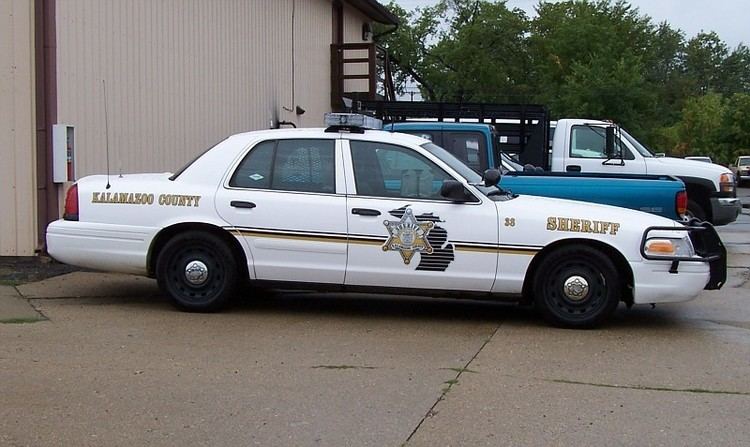Area 1,502 km² Population 256,725 (2013) Unemployment rate 3.8% (Apr 2015) | Congressional district 6th Website www.kalcounty.com Founded 7 May 1830 | |
 | ||
Colleges and Universities Western Michigan University, Kalamazoo College, Kalamazoo Valley Communi, West Michigan College o, Ross Medical Educatio Points of interest Kalamazoo Institute of Arts, Kalamazoo Valley Museum, Air Zoo, Kalamazoo River Valley Trail, Al Sabo Preserve | ||
Mystery mounds of kalamazoo county michigan
Kalamazoo County is a county located in the U.S. state of Michigan. As of the 2015, the population was 260,263. The county seat is Kalamazoo.
Contents
- Mystery mounds of kalamazoo county michigan
- Map of Kalamazoo County MI USA
- History
- Geography
- Geographic features
- Adjacent counties
- Air service
- Demographics
- Government
- Elected officials
- Cities
- Villages
- Census designated places
- Other unincorporated communities
- References
Map of Kalamazoo County, MI, USA
Kalamazoo County is included in the Kalamazoo, Portage, MI Metropolitan Statistical Area.
History
Kalamazoo County was organized in 1830, although its set off date is unknown. The village of Kalamazoo (then known as Bronson) was made the county seat in 1831.
The name purportedly means "the mirage or reflecting river" and the original Indian name was "Kikalamazoo". See, Etymology of Kalamazoo for detail on the origin of the name. See also, List of Michigan county name etymologies.
Geography
According to the U.S. Census Bureau, the county has a total area of 580 square miles (1,500 km2), of which 562 square miles (1,460 km2) is land and 19 square miles (49 km2) (3.2%) is water.
Geographic features
Adjacent counties
Air service
Demographics
As of the 2010 United States Census, there were 250,331 people residing in the county. 80.1% were non-Hispanic White, 11.1% Black or African American, 2.2% Asian, 0.5% Native American, and 3.0% of two or more races. 4.0% were Hispanic or Latino (of any race).
As of the census of 2000, there were 238,603 people, 93,479 households, and 57,956 families residing in the county. The population density was 425 people per square mile (164/km²). There were 99,250 housing units at an average density of 177 per square mile (68/km²). The racial makeup of the county was 84.57% White, 9.73% Black or African American, 0.41% Native American, 1.83% Asian, 0.03% Pacific Islander, 1.27% from other races, and 2.15% from two or more races. 2.64% of the population were Hispanic or Latino of any race. 18.3% were of German, 11.5% Dutch, 10.3% English, 8.4% Irish and 7.2% American ancestry according to Census 2000. 93.7% spoke English and 2.8% Spanish as their first language.
There were 93,479 households out of which 30.40% had children under the age of 18 living with them, 47.70% were married couples living together, 11.00% had a female householder with no husband present, and 38.00% were non-families. 28.00% of all households were made up of individuals and 8.50% had someone living alone who was 65 years of age or older. The average household size was 2.43 and the average family size was 3.00.
In the county, the population was spread out with 24.10% under the age of 18, 15.20% from 18 to 24, 28.20% from 25 to 44, 21.10% from 45 to 64, and 11.40% who were 65 years of age or older. The median age was 33 years. For every 100 females there were 93.60 males. For every 100 females age 18 and over, there were 90.50 males.
The median income for a household in the county was $42,022, and the median income for a family was $53,953. Males had a median income of $39,611 versus $27,965 for females. The per capita income for the county was $21,739. About 6.50% of families and 12.00% of the population were below the poverty line, including 12.30% of those under age 18 and 6.30% of those age 65 or over.
Government
The county government operates the jail, provides law enforcement in unincorporated areas, maintains rural roads, operates the major local courts, keeps files of deeds and mortgages, maintains vital records, administers public health regulations, and participates with the state in the provision of welfare and other social services. The county board of commissioners controls the budget but has only limited authority to make laws or ordinances. In Michigan, most local government functions — fire, building and zoning, tax assessment, street maintenance, etc. — are the responsibility of individual cities and townships.
Elected officials
(information as of November 2014)
